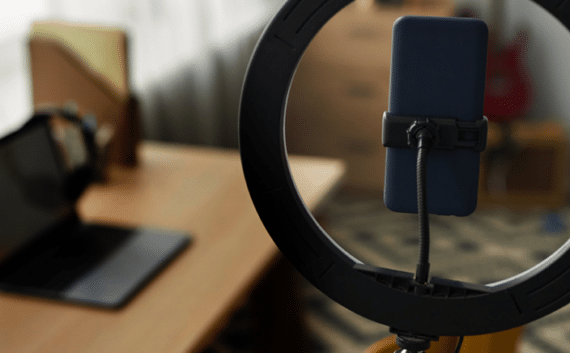
A website is often the customers’ first touch point with a brand, so it’s vital to make a good first impression. Depending on the type of business, a website can also become the go-to hub for brand/customer interaction and ongoing brand loyalty. A website that’s difficult to navigate, ill-equipped with relevant information or just down-right looks bad, can turn potential customers away quickly and some for good.
Here are nine mistakes your brand might be making with your website.
1 – Set and forget
The first mistake a brand can make when it comes to their website is to set and forget it. Successful brands are frequently updating their site – keeping it fresh, relevant, informative and on-brand. If it’s been more than a year since you last reviewed your website, take some time to go over it with a magnifying glass and a fine tooth comb and check if it’s still doing right by your brand or if it needs some TLC.
2 – Too much content
Got a lot to say? Great! But if it’s presented like a wall of text that feels like you’re reading an essay, you risk overwhelming (and putting off) your site visitors. The key to communicating a lot of information to your customers is structure. Ensure information is succinct and categorised with well positioned images that help break it up, add interest and context. Immediately, your customers should get a clear idea of who you are, what your product or service is, and how to navigate for more information.
3 – Not enough content
In an attempt to keep your website sleek, clean and modern, there’s a chance you may have undercooked your content. Your website should answer important questions: Who are you? What are you offering? How does it work? Where are you? How are you contactable? Nail down the basics and then take it a step further – find opportunities to show your customers that you are an expert in your field and are ready to help them. Share FAQs, case studies, testimonials, downloadable brochures, eBooks, blogs, demos, guides, quizzes or an event calendar. Above all, avoid vague marketing speak that sounds good but says nothing.
4 – Out of date content
A lot can happen in a year, month, or even a week. Are you still advertising a discontinued product, service or promotion? Have you moved and not updated your contact details? Have you forgotten to update any industry news, event calendars, case studies or blogs in several years? Keeping your content current not only demonstrates confidence, relevance and expertise, but also confirms to your customers that you haven’t gone out of business.
A ‘boosted post’ is simply a timeline post on your brand’s Facebook Page that you can put money behind to reach more users than you would organically. When you consider that the average organic Facebook Page reach is sitting around 5.2% as of late-2020, boosting your post ensures that the social content you’ve put hard work into is more likely to be seen by users across Facebook.
5 – Typos/errors
You might be forgiven for one typo or error, but multiple will damage your brand’s credibility. Typos and errors can be a signal of a fraudulent site, indicate a lack of care and attention to detail, or confuse and mislead customers into purchasing the wrong product. It’s in your brand’s best interest to rectify any typos or errors immediately to instill trust and confidence in your customers.
6 – Poor design choices
A well-designed website is an important factor in demonstrating your brand’s credibility. As with typos/errors, a website that looks like it was made in the early 2000s, can also be considered questionable and may put off customers. There’s a lot of elements that can add up to an overall bad design. These can include:
- Low quality images
- Generic stock images that feel fake or don’t add value or context
- Images with a large file size that take too long to load
- Inconsistency in image sizes
- Illegible typefaces and font colour
- Too many different fonts
- Inconsistent or inappropriate colour palette
Poor design choices can sometimes stem from a lack of clarity and cohesion with your brand identity. If you need help with your brand identity, get in touch with NOUS.
7 – Bad user experience
User experience is fast becoming a critical factor for website visitors. Sure, your site may look good, but if it’s difficult to navigate or slow to load, visitors will jump back to their search page and start browsing elsewhere. Other things to look out for are broken modules or site links, non-responsive design or improper mobile design, and lack of geo-location functionality (i.e. ability to ‘set store’ or ‘choose location’.
8 – Lack of customer service
Is it clear to your customers what to do or how to get in touch when things go wrong? Live chat tools are an increasingly popular feature for brands to have in place on their website. However, they’re only useful if there’s actually someone there to help. If you don’t have the resources to monitor a live chat system, make sure your contact details or online contact form are easy to find. It can also be a good idea to include troubleshooting directions for products or a FAQ page for your brand’s services.
9 – Hosting provider
A good hosting provider is just as important as a good website. A common mistake small businesses make is selecting either free or very cheap hosting providers. While you may be saving money up front, it means you’ll have to fork out for things you do need, such as improved speed, additional storage, customer support and other features. Going with a cheap hosting provider could also end up costing your business in other ways. The compromise can be on website and data security, unexpected outages or delays to resolve issues. Your hosting is the caretaker of your website, and if your website is an asset to your brand, then you don’t want to be skimping on protecting it.
3 tips for success
If you think your brand’s website may have fallen victim to one of these mistakes, don’t fret. There are a couple of things you can do to make sure you’re staying on top of your website and putting your best foot forward online.
- Set up a schedule to review and update your website – the frequency of which will depend on your brand, type of website and content. For instance;
-
- Simple brochure website with basic company information – 6 months to annually.
- Websites with company/industry updates and blogs – monthly.
- E-commerce websites with high turnover of sale and product information – daily to weekly
-
- Check how your website stacks up against your competitors. Are they doing something better that you can improve upon?
- Get NOUS to design, develop and host your website.
NOUS has designed and launched hundreds of websites – from simple brochure website designs to powerful e-commerce systems. Get in touch with the team at [email protected] or call us on 07 3003 0722.





